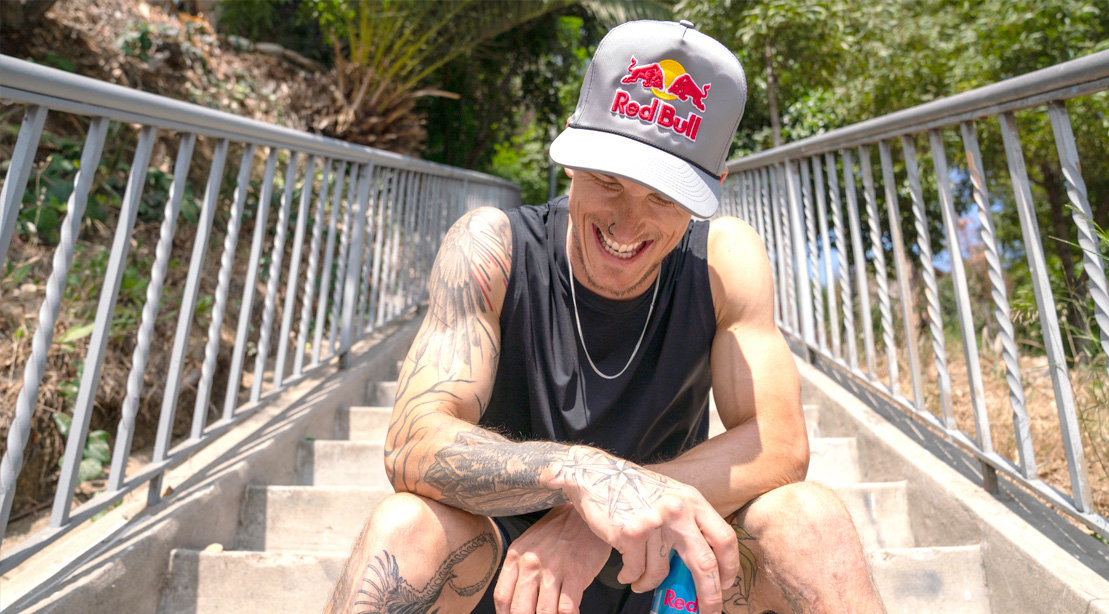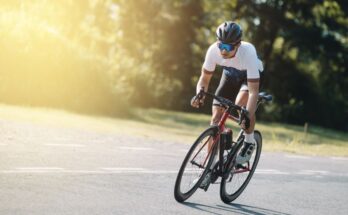[ad_1]
Almost from birth, Johnny Collinson has been proving there are no obstacles too high to overcome.
By age 4, Collinson had already climbed the summit of Washington’s Mount Rainier. Before his 18th birthday, he went on to climb the highest peak on every continent—becoming the youngest person to scale the Seven Summits.
Today, Collinson, one of the world’s top freestyle skiers, is one step closer to completing a different type and perhaps his most challenging uphill climb: regaining his top form after a horrifying downhill mountain crash nearly ripped apart most of his knee nearly two years ago.
For the Red Bull athlete, known worldwide for dazzling social media and YouTube viewers with death-defying 360s, half pipes and other freestyle feats, getting his two feet back to the top of powder-packed mountains has been the goal since being sidelined with an injury that’s required multiple surgeries, grueling months of inactivity and lots of uncomfortable rehab.
The catastrophic 2021 crash occurred during what was supposed to be a fun day of skiing down the mountains of Lake Tahoe. It was one of Red Bull’s signature events, the Red Bull Raid. While setting up for a 360—a move in which you “pop” off a cliff, perform a 180 and begin skiing backwards—Collinson recollects extreme icy conditions had him accelerating faster than anticipated. After an awkward takeoff, Collinson says he hit the next cliff at a bad angle, crashing down and rolling at what he says was over 40 mph before coming to a stop. But the damage was done.
“I immediately felt some blow up in my leg,” he recalls. “And then I kept tumbling down the mountain and I could kind of feel I could feel my leg flopping around and like, was trying to hold it in place. But I could tell other stuff was tearing.”
Making matters worse, his skis never released, causing what he describes as a lever-like effect creating extreme force and more trauma throughout the dangerous descent.
He was rushed to an ER in Salt Lake City, and the prognosis was as bad as the pain: His knee was blown out—patellar tendon, ACL, MCL, PCL and meniscus all torn—this coming just after recovering from back-to-back right ACL tears in both 2018 and 2019.
“My patellar tendon stretched until it broke, which I think is quite uncommon,” he says. “My surgeon said he’d never seen it before.”
Now, more than 18 months later, Collinson is inching closer for a return to competitive skiing in November. His Winning Strategy has been a mix of accepting the risks of his extreme sport while practicing patience while sticking to a plan or rehab and training. After nearly two years later, Collinson is a little over a month away from achieving his goal.
“The goal for me is just to be on snow when the resorts open up here in North America,” Collinson says. “So that’s end of November. So I’ve got some work to wrap everything up. And then it’s pretty much go time.”
Accept the Risks with the Rewards
The moment I took off and began doing my 360 I could just feel the rotation just wasn’t quite right the terrain where I was going to land. It was like, this is not really what I want. And then as soon as I landed, I was just trying to manage the situation, but things were moving so fast. I just hit the cliff and then everything exploded.
Those split seconds, where it’s slow in your mind, I can still picture that slowness of the moment. I knew that injury was imminent, again, it was like, this isn’t gonna end well. But to be honest, I accepted the risk by doing those types of things. I know these things can happen, so when it does, I just need to step up to the plate and manage the mental stress of it and the physical stress of it.
There’s no such thing as a Plan B up there when you’re in the air and it’s not really your best. Still, it’s why you put in all the training and all the work to be at your best. And even then, all the work can only get you so far at times.
Rewind and Reevaluate the Situation
I watched the replay, which was nice to see because I had it imagined in my head one way. So it was nice to see how the crash actually looked, kind of from an outsider’s perspective this time. For me, I have a harder time watching other people get hurt, but for some reason watching myself [go down the mountain] wasn’t that bad—I had already gotten hurt, so I knew the outcome. So watching the replay a few times became more like a clinical breakdown of what went wrong. It was like, “Oh, that looked bad.: Or, “That didn’t go right.”
Honestly the hardest part was getting injured again, after really trying to dial myself in after two other ACL tears. I worked to get stronger and made sure I felt good and ready for anything thrown at me—but then I get hit with this crazy injury. That’s kind of the hardest part. It was like, “What did I miss?” Or, “What could I have done better?” But hindsight is 20-20. You just have to take the bad in stride, and just continue working to do your best.

Johnny Collinson Trusts the Process (However Long It Will Take)
I definitely wanted to get back to skiing. And no one specifically said no. But…
Just from a timeline perspective, it takes close to year for your ligament to like, be strong again. So that’s kind of the baseline for what I had going on, I had an ACL put it in October, no matter what we’re given that nine months, no matter how good I feel, how strong I feel. And then after that nine months, it’s like, OK, when can we start skiing again?
It was almost eight weeks I wasn’t allowed to bend my leg at all, or use my hip flexor or my core, so I can let the patellar tendon heal. That basically holds all your quad muscles in place, so when that broke, my quad muscles was slinking up into my leg. So in surgery, doctors had to kind of pull it back down, and place enough tension on the patellar tendon. And then we had it straightened out and immobilized. And we had to let that tendon heal without any flexion.
Yeah, so for like eight weeks, I was pretty much just sitting there. I did some basic upper body exercises in my basement. I’d sit on the floor and do kettlebell halos, biceps curls, shoulder presses—anything to get the blood moving. After getting cleared to bend my knee, It was then trying to get that range of motion back.
Time and Patience Help Heal
We did scraping, cupping, heavy rollers, everything possible to loosen up the muscles and tendons. So we spent about a month and a half working on that without getting too far because of all the scar tissue.
That’s when I had to go in for a manipulation, where they put me out and then the doctor just cranks out the knee to break up the scar tissue. That was a game changer. Right after that I was able to hop on the spin bike, like, immediately after getting home from the operation. I spun for about two hours. I wasn’t worried about watts, just getting the motion back.
That was the start. Five months in, I was like starting to move it a little bit, which was still a bit tricky because there was no blueprint for this injury. As I was starting to recover and trying to build muscle, but I still had no ACL or PCL and a lot of shift in my knee still, which was still limiting as far as physical therapy.
At the same time, we were working knowing that another surgery was coming which was going to be another setback. The second surgery, in Oct. 2021, was actually good for me mentally. Before, it was tough trying to work knowing another surgery was coming. Here, it was easier to fully commit back into physical therapy and rehab.
Keep It Strong and Simple
For most of my life I’ve done kind of like a base level of training. At one point I was actually training more specifically for climbing for rock climbing. Then my first ACL injury led me down the path of really getting into the training aspect and prepping for the ski season and just exploring the fitness world a bit.
My family was always super active, so ever since I was a kid, I would play around with pistol squats or play on the slackline—we’d always be training for alpine ski racing. So I always had a good, full range of motion.
Having that is important when it comes to skiing and other action sports because there’s so many outside forces acting on your body—we’re doing really unnatural things with our bodies. So, kind of having as much mobility and then strength through that range of motion is pretty important because if you only train a certain range and you say, hit a big enough jump skiing, it’s going to force you out of that range of motion. So for me, it’s pretty important to take care of that mobility.
As far as training philosophy, I’d say mine is to keep it simple. You see a lot of guys on the internet coming up with these really wild, wacky workouts. And I think if you have like a goal, that’s great. But for me, the basics work really well.
Single-leg work, like Bulgarian split squats are really high on my list. When it comes to ski specific exercises, I also like single-leg RDLs and good mornings as well. You’re getting more balance and stability work by being on a single leg. You want strong quads, but you also want strong hamstrings strong glutes, so trying to target those would be my recommendation.
Johnny Collinson is Cautiously Confident
I mean, I would be totally lying if I said that I don’t think about the injury going back on snow.
But I think the biggest part for me has been putting in all this work in the gym and knowing that I’m trying to turn over every stone and I’m like, dedicating as much time as I can, physically. So it’s like, my body is good—we threw everything we could at it in the gym. And now I’m gonna go back skiing and feel confident that like, we did an exceptional job of getting my leg strong again. And then it’s just kind of getting that time on the snow, knowing the first few days you’re going to be a little bit hesitant. Every time I’m doing something, it’s for the first time again, like hitting a jump. So it’s weighing whether taking that risk is worth it at this point. It might not be worth doing a 360 again right off the bat. I might need a lot more time just skiing before I do a trick again.
Follow Johnny Collinson on Instagram @johncollinson!
[ad_2]
Article link
[recent_products limit=”4″ orderby=”rand”]





